-
BackX
-
Components
-
-
Category
-
Semiconductors
- Diodes
- Thyristors
-
Electro-insulated Modules
- Electro-insulated Modules | VISHAY (IR)
- Electro-insulated Modules | INFINEON (EUPEC)
- Electro-insulated Modules | Semikron
- Electro-insulated Modules | POWEREX
- Electro-insulated Modules | IXYS
- Electro-insulated Modules | POSEICO
- Electro-insulated Modules | ABB
- Electro-insulated Modules | TECHSEM
- Go to the subcategory
- Bridge Rectifiers
-
Transistors
- Transistors | GeneSiC
- SiC MOSFET Modules | Mitsubishi
- SiC MOSFET Modules | STARPOWER
- Module SiC MOSFET ABB’s
- IGBT Modules | MITSUBISHI
- Transistor Modules | MITSUBISHI
- MOSFET Modules | MITSUBISHI
- Transistor Modules | ABB
- IGBT Modules | POWEREX
- IGBT Modules | INFINEON (EUPEC)
- Silicon Carbide (SiC) semiconductor elements
- Go to the subcategory
- Gate Drivers
- Power Blocks
- Go to the subcategory
- Electrical Transducers
-
Passive components (capacitors, resistors, fuses, filters)
- Resistors
-
Fuses
- Miniature Fuses for electronic circuits - ABC & AGC Series
- Tubular Fast-acting Fuses
- Time-delay Fuse Links with GL/GG & AM characteristics
- Ultrafast Fuse Links
- Fast-acting Fuses (British & American standard)
- Fast-acting Fuses (European standard)
- Traction Fuses
- High-voltage Fuse Links
- Go to the subcategory
- Capacitors
- EMI Filters
- Supercapacitors
- Power surge protection
- Go to the subcategory
-
Relays and Contactors
- Relays and Contactors - Theory
- 3-Phase AC Semiconductor Relays
- DC Semiconductor Relays
- Controllers, Control Systems and Accessories
- Soft Starters and Reversible Relays
- Electromechanical Relays
- Contactors
- Rotary Switches
-
Single-Phase AC Semiconductor Relays
- AC ONE PHASE RELAYS 1 series| D2425 | D2450
- One phase semiconductor AC relays CWA and CWD series
- One phase semiconductor AC relays CMRA and CMRD series
- One phase semiconductor AC relays - PS series
- Double and quadruple semiconductor AC relays - D24 D, TD24 Q, H12D48 D series
- One phase semiconductor relays - gn series
- Ckr series single phase solid state relays
- One phase AC semiconductor relays for DIN bus - ERDA I ERAA series
- 150A AC single phase relays
- Rail Mountable Solid State Relays With Integrated Heat Sink - ENDA, ERDA1 / ERAA1 series
- Go to the subcategory
- Single-Phase AC Semiconductor Relays for PCBs
- Interface Relays
- Go to the subcategory
- Cores and Other Inductive Components
- Heatsinks, Varistors, Thermal Protection
- Fans
- Air Conditioning, Accessories for Electrical Cabinets, Coolers
-
Batteries, Chargers, Buffer Power Supplies and Inverters
- Batteries, Chargers - Theoretical Description
- Modular Li-ion Battery Building Blocks, Custom Batteries, BMS
- Batteries
- Battery Chargers and Accessories
- Uninterruptible Power Supply and Buffer Power Supplies
- Inverters and Photovoltaic Equipments
- Energy storage
- Fuel cells
- Lithium-ion batteries
- Go to the subcategory
-
Automatics
- Futaba Drone Parts
- Limit Switches, Microswitches
- Sensors, Transducers
-
Infrared Thermometers (Pyrometers)
- IR-TE Series - Water-proof Palm-sized Radiation Thermometer
- IR-TA Series - Handheld Type Radiation Thermometer
- IR-H Series - Handheld Type Radiation Thermometer
- IR-BA Series - High-speed Compact Radiation Thermometer
- IR-FA Series - Fiber Optic Radiation Thermometer
- IR-BZ Series - Compact Infrared Thermometers
- Go to the subcategory
- Counters, Time Relays, Panel Meters
- Industrial Protection Devices
- Light and Sound Signalling
- Thermographic Camera
- LED Displays
- Control Equipments
-
Recorders
- Hybrid Recorders - AL3000 Series | CHINO
- Graphic Recorder - KR2000 Series | CHINO
- Ubiquitous Recorders - KR5000 Series | CHINO
- Palm-sized Temperature/Humidity Meters - HN-CH Series | CHINO
- Consumables for Recorders
- 71VR1 - Compact Paperless Recorder | M-SYSTEM
- Graphic Recorder - KR3000 Series | CHINO
- PC Recorders - R1M Series | M-SYSTEM
- PC Recorders - R2M Series | M-SYSTEM
- PC Recorders - RZMS Series | M-SYSTEM
- PC Recorders - RZUS Series | M-SYSTEM
- Go to the subcategory
- Go to the subcategory
-
Cables, Litz wires, Conduits, Flexible connections
- Wires
- Litz wires
- Cables for extreme applications
- Sleevings
-
Braids
- Flat Braids
- Round Braids
- Very Flexible Flat Braids
- Very Flexible Round Braids
- Cylindrical Cooper Braids
- Cylindrical Cooper Braids and Sleevings
- Flexible Earthing Connections
- Galvanized and Stainless Steel Cylindrical Braids
- PCV Insulated Copper Braids (temp. up to 85C)
- Flat Aluminium Braids
- Junction Set - Braids and Tubes
- Go to the subcategory
- Traction Equipment
- Cable Terminals
- Flexible Insulated Busbars
- Flexible Multilayer Busbars
- Cable Duct Systems
- Hoses
- Go to the subcategory
- View all categories
-
Semiconductors
-
-
- Suppliers
-
Applications
- CNC Machine Tools
- DC and AC Drives (Inverters)
- Energetics
- Energy bank
- Equipment and Components for Hazardous Areas [Ex]
- Equipment for Distribution, Control and Telecommunications Cabinets
- HVAC Automation
- Induction Heating
- Industrial Automation
- Industrial Protective Devices
- Machines for Drying and Wood Processing
- Machines for Thermoforming Plastics
- Mining, Metallurgy and Foundry
- Motors and Transformers
- Power Supplies (UPS) and Rectifier Systems
- Printing
- Temperature Measurement and Regulation
- Test and Laboratory Measurements
- Tram and Railway Traction
- Welding Machines
-
Assembly
-
-
Inductors
-
-
Induction devices
-
-
https://www.dacpol.eu/pl/naprawy-i-modernizacje
-
-
Service
-
- Contact
- Zobacz wszystkie kategorie
How do temperature sensors work?

The basic parameter measured by electronic systems and monitoring and diagnostic systems is temperature - the main factor that affects the quality of operation and performance of industrial equipment. Temperature measurement is present in small and simple systems and devices as well as in advanced industrial systems.
Maintaining the right temperature of the device allows you to significantly extend its life while protecting it from failure or damage. When preparing a piece of equipment for operation, care must be taken to ensure proper ambient temperature and favourable conditions, as well as a good monitoring system using the best quality components and sensors.
The question remains to be answered: how do temperature sensors work? This largely depends on the type of sensor and its mechanism of operation. Manufacturers also use their own technologies to stand out from the competition present on the market. In this article we will focus on the most popular sensors and describe what they are based on.
Operation of the sensor depending on its type
Thermoresistive sensors
The operation of these sensors is based on the change in resistance as a function of temperature. As the temperature increases, the resistance of the sensor can either decrease or increase, usually nonlinearly. Each sensor has its own thermoelectric characteristics, which are adjusted according to the material used in the sensor. On this basis, we can determine the nature of resistance changes depending on the temperature.
Each thermoresistor has a nominal resistance, i.e. a resistance value at the reference temperature (usually 0 °C) and a specific sensitivity, calculated by the ratio of the resistance at 100 °C to the resistance at the nominal temperature.
Thermoelectric sensors (thermocouples)
The operation of thermocouples is based on the Seebeck phenomenon - the formation of a potential difference at the point of contact of two different metals, which is proportional to the difference in their temperatures. Each thermocouple has different properties that depend on the types of metals used in it. There are specific types of thermocouples, which are outlined in standards related to temperature sensors.
Each thermocouple has different temperature characteristics, therefore, for their proper operation, special control systems are used, which through built-in linearization components, allow for correct reading of the measured temperature. Additionally, systems based on thermocouples are small in size, do not need additional power supply and are reliable.
Semiconductor sensors (thermistors)
Solid-state sensors work in the same way as thermoresistive sensors. The only difference is the sign of the coefficient of resistance change that thermistors can have. There are NTC (negative sign) and PTC (positive sign) thermistors. NTC thermistors are mainly used for temperature compensation in devices and limiting values of inrush currents. PTC thermistors can be found, for example, in signaling systems as protection against overcurrent.
Integrated sensors
The principle of integrated sensors is that the temperature is measured by a measuring element and then processed by circuitry housed in a single integrated circuit enclosure. Semiconductor sensing elements are based on using the base-emitter junction voltage. As the temperature increases, the voltage decreases accordingly. Such sensors are most commonly found in electronic devices to protect their circuits from excessive heating, which can lead to irreversible damage.
Summary
Each temperature sensor is characterized by properties specific to its construction. Depending on those properties, they differ in their operating principle and the way they process input signals. In this way, for each application we will find the type of sensor that best fulfils its role, for example when working indoors or outdoors.
More information about temperature sensors can be found on our website: temerature sensors dacpol.eu.
Related products
Related posts
 Now available – DC/DC converters from PREMIUM
Now available – DC/DC converters from PREMIUM
 New release in DACPOL lighting for lathes – Kira covers
New release in DACPOL lighting for lathes – Kira covers




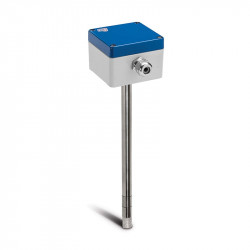
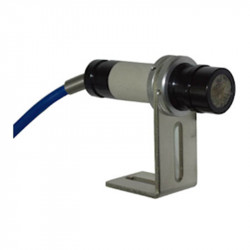
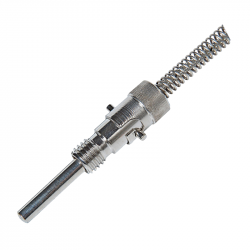
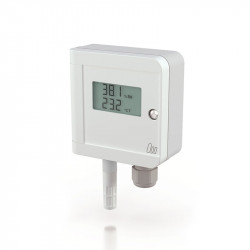
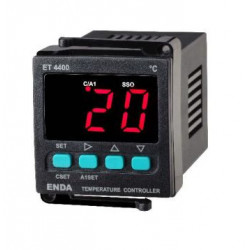
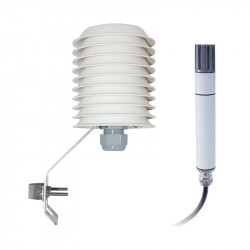
Leave a comment